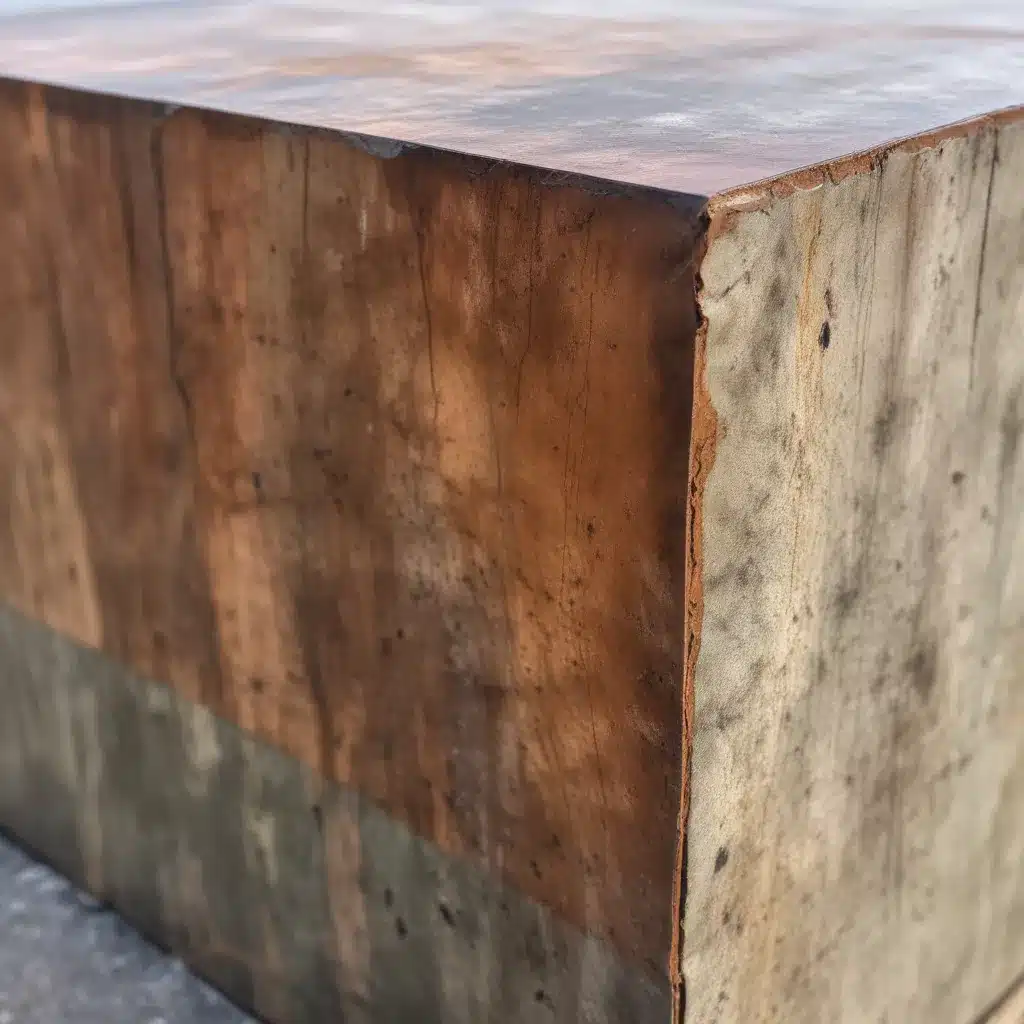
As an experienced welder and metal fabricator, I’ve had the privilege of working with some of the most cutting-edge welding techniques in the industry. And when it comes to enhancing the corrosion resistance of critical components, weld overlay cladding has been a game-changer. Let me share my personal insights on how this advanced process can transform the durability and longevity of your metal fabrications.
The Power of Weld Overlay Cladding
In the world of metal fabrication, corrosion and wear are constant adversaries, threatening the integrity and lifespan of our creations. But with weld overlay cladding, we can effectively mitigate these challenges and deliver long-lasting, high-performance solutions. The process involves applying a protective layer of corrosion-resistant alloy, such as Inconel, Stellite, or stainless steel, onto the surface of the base metal.
Through the use of gas tungsten arc welding (GTAW) with a hot wire, we can precisely control the heat input and deposition rate, ensuring a strong, uniform, and highly adherent cladding layer. This pulsed welding technique allows me to fine-tune the process, adjusting the heat input and quality of the cladding material to achieve the desired level of protection.
Tackling Corrosion in Harsh Environments
One of the primary benefits of weld overlay cladding is its ability to safeguard components against the ravages of corrosion. Whether it’s the harsh H2S-rich environments of the oil and gas industry, the alkaline conditions of chemical processing, or the abrasive forces encountered in mining operations, this advanced technique can provide a robust and reliable solution.
By creating a protective barrier against corrosive substances, weld overlay cladding can significantly extend the lifespan of equipment exposed to such challenging conditions. I’ve seen firsthand how this process can prevent pitting, hydrogen attack, intergranular corrosion, and even microbial-induced cracking, ensuring the integrity and performance of critical machinery components and pipelines.
Enhancing Wear Resistance
Corrosion isn’t the only foe we face in the world of metal fabrication; abrasive forces can also take a toll on our creations. Components subjected to frequent friction, erosion, or impact, such as drill bits, shaft collars, blades, and buckets, can benefit immensely from the added protection of weld overlay cladding.
By increasing the surface hardness through the application of materials like Stellite or hard-facing overlays, we can significantly reduce wear and tear on these high-stress components. This, in turn, improves their efficiency and extends their operational lifespan, positively impacting the overall performance and reliability of the equipment.
Tailoring to Extreme Temperatures
In addition to corrosion and wear resistance, weld overlay cladding can also safeguard equipment against the challenges of extreme temperatures. Whether it’s the high-heat environments of coke furnaces, waste heat recovery systems, or the cryogenic conditions encountered in certain industries, the right cladding material can ensure the stability and functionality of your fabrications.
By carefully selecting the appropriate alloy and optimizing the cladding process, we can create a protective layer that maintains its integrity and performance even under the most demanding thermal conditions. This level of customization allows us to tailor the solution to the specific needs of the application, ensuring that your equipment can withstand the rigors of its operating environment.
The Environmental Impact of Weld Overlay Cladding
As metal fabricators, we have a responsibility to consider the environmental implications of our work. Weld overlay cladding not only benefits the longevity and performance of our creations but also contributes to sustainability efforts in a tangible way.
By extending the lifespan of equipment, we can reduce the frequency of replacements, which in turn minimizes the need for raw materials, mining, and manufacturing processes. This translates to a lower environmental impact, with fewer greenhouse gas emissions, less waste generation, and a more efficient use of natural resources.
Furthermore, the improved efficiency and reduced downtime associated with cladded equipment contribute to overall energy conservation. With less maintenance and servicing required, the environmental footprint of the equipment’s operation is significantly reduced. It’s a win-win scenario for both the end-user and the environment.
Collaborating with Experts
As a welder and fabricator, I’ve had the privilege of collaborating with industry experts who are at the forefront of weld overlay cladding technology. Companies like https://theweldfab.com/ have been instrumental in helping me stay up-to-date with the latest advancements and best practices in this field.
Through their specialized services and guidance, I’ve been able to refine my techniques, optimize my equipment, and deliver superior results for my clients. Whether it’s tackling complex geometries, ensuring consistent quality, or navigating the nuances of material selection, having access to this wealth of expertise has been invaluable.
Embracing the Future of Fabrication
As we look to the future of metal fabrication, I’m excited to see the continued evolution of weld overlay cladding technology. With advancements in automation, data integration, and material science, the potential for even more robust and versatile solutions is on the horizon.
Imagine a future where robotic welding systems, equipped with advanced sensors and real-time monitoring capabilities, can deliver flawless cladding with unparalleled precision and repeatability. Or envision a world where the selection of cladding materials is tailored to the specific environmental conditions, optimizing the protection for each and every application.
This is the future I’m eager to embrace, one where the art of welding and the science of fabrication converge to create truly remarkable, long-lasting, and environmentally responsible metal components. And as an experienced welder, I can’t wait to be a part of this exciting journey, pushing the boundaries of what’s possible in the world of weld overlay cladding.
So, whether you’re facing the challenges of corrosion, wear, or extreme temperatures, I encourage you to explore the transformative power of this advanced welding technique. By partnering with industry experts and embracing the latest innovations, we can elevate the durability and performance of your metal fabrications, while also contributing to a more sustainable future.
Let’s dive deep into the world of weld overlay cladding and unlock the full potential of your metal components. The future of fabrication is here, and it’s time to embrace it with open arms.


